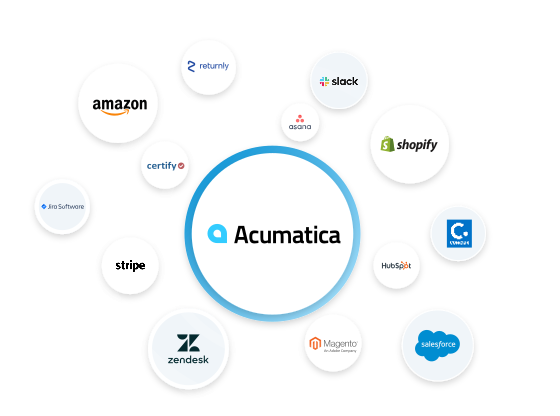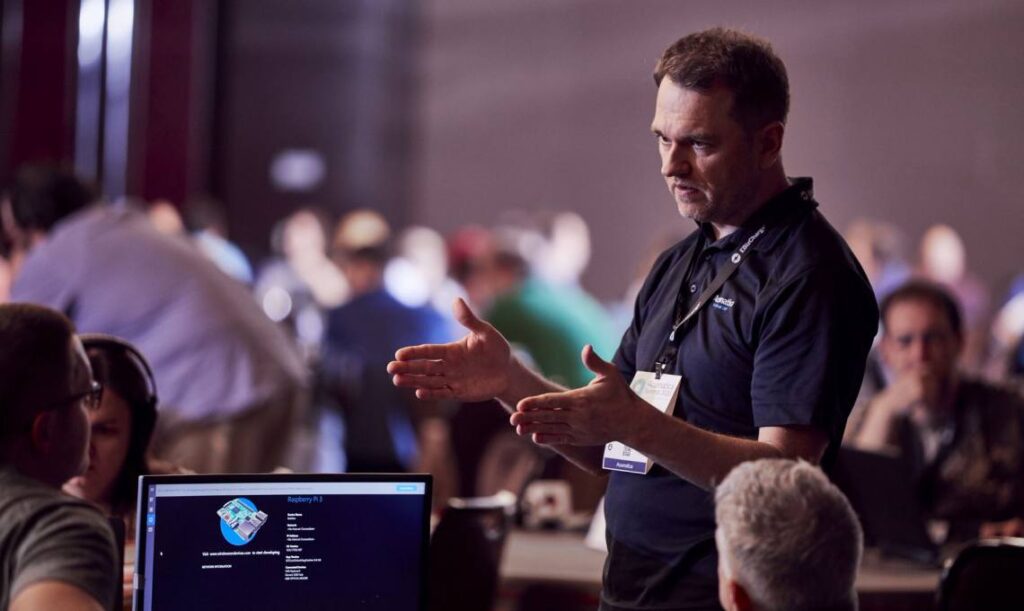Acumatica
Implementation & Planning

Our award-winning support team is here to get you of the ground and ensure that, as your business grows and evolves, you’re always getting the most out of your software investment.
The 8 phases of the ERP implementation life cycle
1. Planning and organization : We’re not counting this phase as part of the time or the cycle ERP life it takes to implement the system as it all occurs before the start of spending money or real physical activity. Nevertheless, a team can be assembled, and a decent plan developed in a matter of a few weeks for a motivated company. More typically, the planning stage might last up to six months or more.
2. System selection : ERP selection can be a challenging endeavor given its importance to the project and the vast array of choices. From requirements definition and early market surveys through determining the “short list”, gathering proposals, holding demonstrations, final selection and negotiation, this systems life cycle phase typically consumes anywhere from 3-to-6 months.
3. Installation : Sometimes there is a lead time for delivery of hardware and software, installation of infrastructure components like networking facilities and data collection/display devices, and installation of software that could be from several days to several weeks or more. Cloud-based ERP may have little or no installation lead time and no software installation requirements.
4. Data conversion and loading : Once the ERP technology and ERP system software is ready, data must be entered and/or moved into the system’s database. This includes “basic records” like customer, vendor and item master files, bills of material, production facilities and routings, general ledger chart of accounts, and the like. Just before going live, active transactional data is converted, or transactional activity is transitioned, into the new ERP system software. Some of this activity can be completed in parallel with other tasks like training and validation. IT resources and consultants/contractors can primarily accomplish some of this activity, as well. While a significant amount of time and effort is required, this requirement will not add significantly to the implementation timeline.
5. User training and procedure development : This is arguably the most important part of ERP implementations; procedure, development life cycle (and documentation), and user training should take up the majority of the timeline. These requirements consume considerable time and effort from operational employees (actual future users of the system) who are also expected to do their existing jobs at the same time. The duration of this phase depends on the size and complexity of the ERP system software being implemented (number of modules or functional areas involved, number of users, how different the new procedures will be from existing procedures), and how much time users can dedicate to the implementation each day or week. Some companies bring in temporary help, but these outside resources should be devoted to maintaining old procedures rather than working on the full life cycle ERP implementation per se.
6. Testing and validation : IT resources will be heavily involved in this task, working with the users to compare and examine both basic records and transactional data to verify that the data is exactly as it should be (and at least as accurate as in the incumbent system) and that the new ERP system software is producing the expected results. Testing and validation occurs over an extended period as each functional area loads data and starts processing (test) transactions by the users during training and procedure development. This is not necessarily parallel operation; in most cases, it is more of a “pilot” testing situation. Testing and validation do not add much to the timeline explicitly but must be considered in planning the duration of the training and procedure development process.
7. Cut-over and “go live” : Going live can be instantaneous (sometimes called a ‘big bang’ approach), phased in piece-by-piece, or parallel operation where users are expected to keep the old system and the new system in operation simultaneously for a specified period of time (typically one or two accounting periods).
8. Follow-through and project completion : Implementation is not complete once the new system is ‘live’ and the old system is turned off. Users and technical support resources must continue to validate and verify proper operation; user training should continue to enable a more extensive use of what the ERP system software has to offer and expand the benefits of the system. The ongoing improvements and feedback are critical to sustaining the value, use, and quality of the cloud ERP investment.
The ongoing improvements and feedback are critical to sustaining the value, use, and quality of the cloud ERP investment.
Get Started
Implementation and planning
We match Acumatica customers with a local VAR partner who knows their industry and market. Based on the scope of the project, the VAR partner will help develop an implementation project. This plan will include details on how and when data will be migrated or entered, but it’s also an opportunity to get expert advice on streamlining business processes.


Grow
Consulting, customization, and upgrade services
We want our customers to get the most out of their software investment. Our experienced local partners have the business knowledge and technical skills to help tailor Acumatica software to meet the unique needs of growing business in evolving markets. This partnership represents a long-term strategic relationship, and they are there to advise, consult, support, train, and provide services that help our customers get the greatest benefits from Acumatica.
